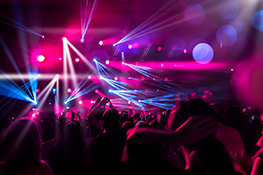The Power of LED Wash Lights: Achieving Seamless Color Transitions
Introduction: Illuminating the Stage with Precision
In the dynamic world of stage lighting, the ability to create smooth, captivating color transitions is paramount. LED wash lights have revolutionized this aspect, offering unparalleled control and versatility to lighting designers. This article delves into the intricacies of LED wash lights, exploring their capabilities in achieving seamless color transitions and enhancing the overall visual spectacle of any performance.
Understanding the Technology Behind Seamless Transitions
Unlike traditional lighting fixtures, LED wash lights utilize individual LEDs arranged in densely packed arrays. This allows for incredibly precise control over the output color. Each LED can be individually addressed, offering granular control over hue, saturation, and intensity. Advanced DMX control protocols further enhance this precision, enabling the creation of nuanced color gradients and breathtaking transitions.
Key Factors Affecting Seamless Color Transitions
Color Mixing Capabilities:
The quality of color mixing directly impacts the smoothness of transitions. High-quality LED wash lights use a blend of red, green, and blue (RGB) LEDs, or even include amber and white for a wider color gamut. A larger number of LEDs and sophisticated color mixing algorithms contribute to smoother, more natural-looking transitions.
DMX Control and Protocols:
DMX (Digital Multiplex) is the industry-standard protocol for controlling stage lighting. Advanced DMX controllers offer features like smooth curves and customizable transition speeds, enabling lighting designers to fine-tune the pace and fluidity of color changes. Support for RDM (Remote Device Management) adds an extra layer of control and monitoring capabilities.
Addressing and Pixel Mapping:
For larger fixtures or arrays of lights, the ability to individually address LEDs or groups of LEDs is crucial. Pixel mapping techniques allow lighting designers to control individual LEDs, creating complex patterns and effects, including incredibly precise and smooth color transitions across the entire wash.
Fixture Placement and Design:
The physical arrangement of wash lights on a stage also affects the seamlessness of transitions. Strategic placement minimizes harsh lines and ensures even color coverage, allowing for fluid color washes across the stage without visible seams or color banding.
Achieving the Perfect Transition: Tips and Techniques
Creating flawless color transitions requires a blend of technical understanding and artistic vision. Consider these tips:
- Use smooth curves in your DMX programming: Avoid abrupt changes in color values. Linear transitions can look artificial; curved transitions are much more natural.
- Experiment with transition speeds: The ideal speed depends on the mood and context of the performance. Slow, gradual transitions create a sense of calm, while faster transitions add dynamism.
- Utilize color palettes: Pre-selected color palettes can streamline the design process and ensure consistent color aesthetics throughout the show.
- Consider the ambient light: Account for existing lighting conditions to ensure the intended color transitions are clearly visible.
- Test and refine: Thorough testing and rehearsal are crucial for ensuring smooth and reliable color transitions during the actual performance.
Conclusion: Unleashing the Creative Potential
LED wash lights have empowered lighting designers to achieve a level of precision and creativity previously unimaginable. By understanding the underlying technology and implementing effective techniques, lighting professionals can craft breathtaking visual experiences with smooth, captivating color transitions, enhancing the emotional impact of any stage performance. The possibilities are as limitless as the imagination itself.
Keywords:
LED Wash Lights, Stage Lighting, Color Transitions, DMX, Pixel Mapping, Lighting Design, RGB, Smooth Color Changes, Stage Effects, Lighting Control, RDM, Theater Lighting, Concert Lighting, Event Lighting


 Auditorium Construction Services
Auditorium Construction Services 